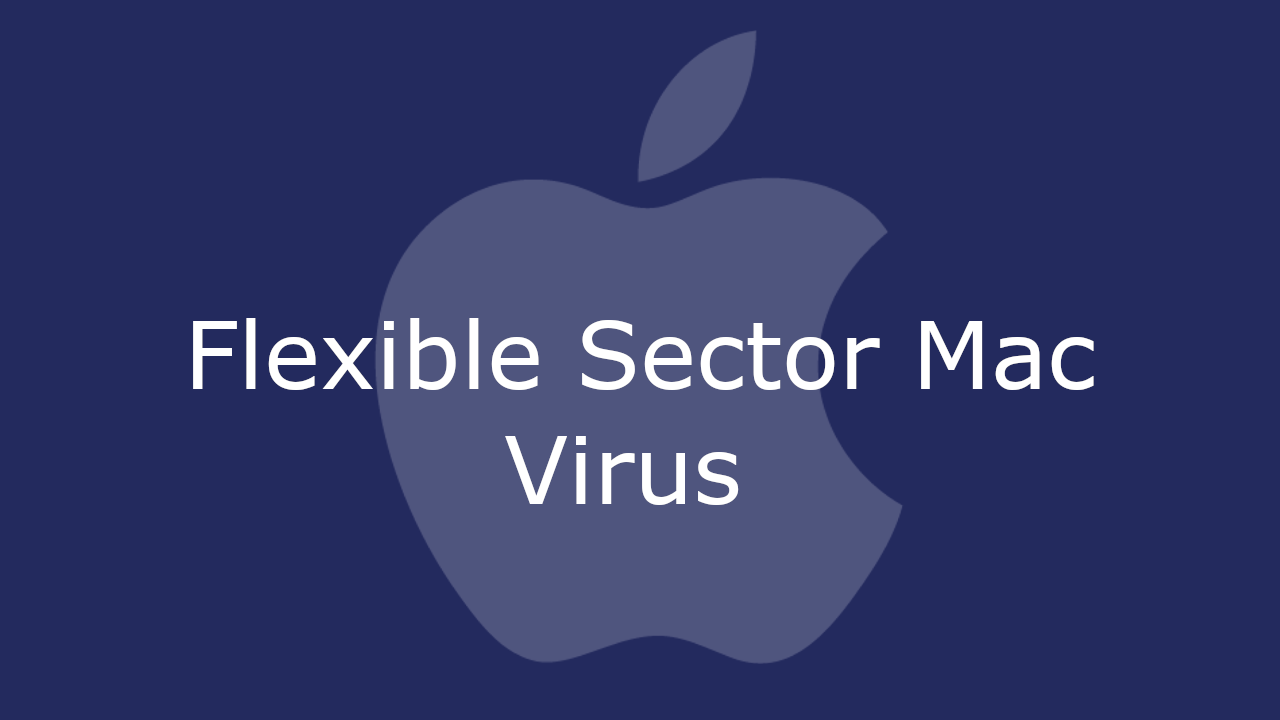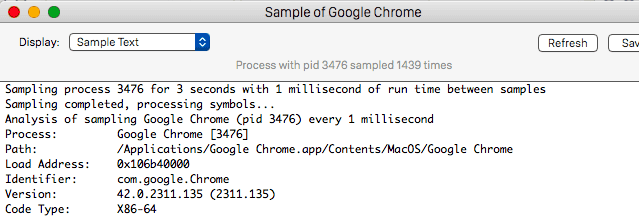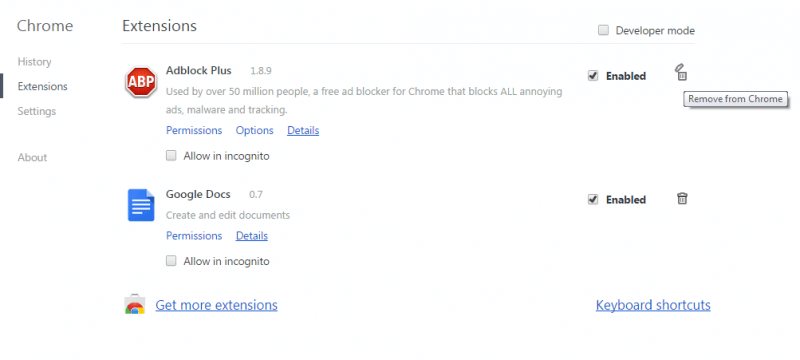Some threats reinstall themselves if you don't delete their core files. We recommend downloading SpyHunter to remove harmful programs for you. This may save you hours and ensure you don't harm your system by deleting the wrong files.
Download SpyHunter (Free Remover)* OFFER *Free Remover allows you, subject to a 48-hour waiting period, one remediation and removal for results found. SpyHunter's EULA, Privacy Policy, and more details about Free Remover.
Flexible Sector
Flexible Sector is a type of software that is designed to generate streams of online ads on the screen of Mac computers. Flexible Sector is what is better known as a browser hijacker.

The FlexibleSector virus on Mac
And this type of software has earned its name because it literally hijacks your browser by taking control over certain browser settings. For instance, it can add new toolbars and plug-ins to your favorite browsing program. And in addition to that, you can expect it to change your default search engine and even the browser’s homepage.
Flexible Sector and its cousins like Accessible Search Engine are capable of integrating with the most popular browsers such as Chrome, Firefox and Safari. In addition, hijackers like this have a reputation for installing ad-generating components as well. This results in you seeing large quantities of online ads in various shapes and sizes: from popups and banners to box messages and in-text links. In addition, you may experience frequent page redirects as a result of Flexible Sector’s activity.
Flexible Sector for Mac
Flexible Sector for Mac is a browser hijacker that is used as an advertising tool by its developers. Furthermore, the creators of Flexible Sector for Mac are often involved in PPC schemes as a mechanism to earn revenue. Hence, users are typically exposed to insane amounts of online ads and sponsored content. The more times you view or click on a certain ad or link, the more income is generated for the hijacker developers.
Furthermore, in order to maximize this income, browser hijackers have been known to gather certain browsing details from each user. This includes your search queries, visited websites and even social media activity. And the purpose of it all is to make the parade of ads more effective by personalizing it and tailoring it to the browsing preferences of each individual user.
What is Flexible Sector?
Although it might seem like it at first, but Flexible Sector is actually not a virus. In fact, Flexible Sector is far from any malicious program and does not have the capacity of inflicting any real damage on your Mac computer. However, it is still wise to exercise caution when dealing with programs of this type.
The numerous page redirects that they facilitate could potentially expose you to infected websites or unsecure web locations. And as a result of that, you could risk getting infected with actual viruses such as Trojans, root kits, ransomware and others. This is a genuine threat to your system and we would advise you to abstain from interacting with any of Flexible Sector’s sponsored content.
The FlexibleSector App
The FlexibleSector app may interfere with your computer’s overall performance. The background processes that the FlexibleSector app runs could cause system sluggishness and even lead to browser crashes.
So, if you would like to avoid that and also get rid of all the annoying ads in your browser, you will have to remove Flexible Sector and all of its components from your Mac. To do this, you can use the removal guide we’ve compiled below. Or you can also make use of the professional removal tool that will take care of the job for you.
SUMMARY:
| Name | Flexible Sector |
| Type | Browser Hijacker |
| Danger Level | Medium (nowhere near threats like Ransomware, but still a security risk) |
| Symptoms | A changed browser homepage and/or default search engine; frequent page redirects and an increase in the presence of online ads. |
| Distribution Method | Program bundles are among the most common means of distributing browser hijackers like Flexible Sector. |
| Detection Tool | Some threats reinstall themselves if you don't delete their core files. We recommend downloading SpyHunter to remove harmful programs for you. This may save you hours and ensure you don't harm your system by deleting the wrong files. |
Remove Flexible Sector from Mac
![]()
More information on SpyHunter, steps to uninstall, EULA, Threat Assessment Criteria, and Privacy Policy.
The first thing you need to do is to Quit Safari (if it is opened). If you have trouble closing it normally, you may need to Force Quit Safari:
You can choose the Apple menu and click on Force Quit.
Alternatively you can simultaneously press ⌘ (the Command key situated next to the space bar), Option (the key right next to it) and Escape (the key located at the upper left corner of your keyboard).
If you have done it right a dialog box titled Force Quit Applications will open up.
In this new dialog window select Safari, then press the Force Quit button, then confirm with Force Quit again.
Close the dialog box/window.
![]()
WARNING! READ CAREFULLY BEFORE PROCEEDING!
More information on SpyHunter, steps to uninstall, EULA, Threat Assessment Criteria, and Privacy Policy.
Start Activity Monitor by opening up Finder, then proceed to ![]()
Once there, look at all the processes: if you believe any of them are hijacking your results, or are part of the problem, highlight the process with your mouse, then click the “i” button at the top. This will open up the following box:

Now click on Sample at the bottom:

Do this for all processes you believe are part of the threat, and run any suspicious files in our online virus scanner, then delete the malicious files:

![]()
The next step is to safely launch Safari again. Press and hold the Shift key while relaunching Safari. This will prevent Safari’s previously opened pages from loading again. Once Safari is opened up, you can release the Shift key.
On the off chance that you are still having trouble with scripts interrupting the closing of unwanted pages in Safari, you may need to take some additional measures.
First, Force Quit Safari again.
Now if you are using a Wi-Fi connection turn it off by selecting Wi-Fi off in you Mac’s Menu. If you are using a cable internet (Ethernet connection), disconnect the Ethernet cable.
![]()
Re-Launch Safari but don’t forget to press and hold the Shift button while doing it, so no previous pages can be opened up. Now, Click on Preferences in the Safari menu,

and then again on the Extensions tab,

Select and Uninstall any extensions that you don’t recognize by clicking on the Uninstall button. If you are not sure and don’t want to take any risks you can safely uninstall all extensions, none are required for normal system operation.
![]()
The threat has likely infected all of your browsers. The instructions below need to be applied for all browsers you are using.
Again select Preferences in the Safari Menu, but this time click on the Privacy tab,

Now click on Remove All Website Data, confirm with Remove Now. Keep in mind that after you do this all stored website data will be deleted. You will need to sign-in again for all websites that require any form of authentication.
Still in the Preferences menu, hit the General tab

Check if your Homepage is the one you have selected, if not change it to whatever you prefer.

Select the History menu this time, and click on Clear History. This way you will prevent accidentally opening a problematic web page again.
![]() How to Remove Flexible Sector From Firefox in OSX:
How to Remove Flexible Sector From Firefox in OSX:
Open Firefox, click on ![]() (top right) ——-> Add-ons. Hit Extensions next.
(top right) ——-> Add-ons. Hit Extensions next.

The problem should be lurking somewhere around here – Remove it. Then Refresh Your Firefox Settings.
![]() How to Remove Flexible Sector From Chrome in OSX:
How to Remove Flexible Sector From Chrome in OSX:
Start Chrome, click ![]() —–>More Tools —–> Extensions. There, find the malware and select
—–>More Tools —–> Extensions. There, find the malware and select ![]() .
.

Click ![]() again, and proceed to Settings —> Search, the fourth tab, select Manage Search Engines. Delete everything but the search engines you normally use. After that Reset Your Chrome Settings.
again, and proceed to Settings —> Search, the fourth tab, select Manage Search Engines. Delete everything but the search engines you normally use. After that Reset Your Chrome Settings.
If the guide doesn’t help, download the anti-virus program we recommended or try our free online virus scanner. Also, you can always ask us in the comments for help!



Leave a Comment